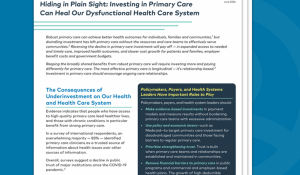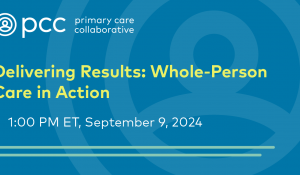You are looking at an archived version of our site. Please visit thepcc.org for a fresh, new experience!
You are here: Array » “Here. Not There”: ...
“Here. Not There”: Rebalancing Health Systems Toward Primary Care
Good news, kind of. New data from the Centers for Disease Control and Prevention indicate that the United States reversed a three-year decline in life expectancy in 2018, thanks to gains made in combating opioid deaths and to improved cancer treatment. But before we cheer too loudly, a longer view is necessary. The 2018 number is still below where we were in 2014 and continues a pattern of progressively poorer performance relative to other countries dating back to 1980, even as our health care costs eclipsed them.
In this context, a very public health-care-industry spat about the unbalanced health care system in Colorado is worth noting. Officials there are pointing to the paltry amounts spent on primary care—the only health service where an increase in supply has been associated with longer life expectancy—while calling the hospital industry to account for high prices and large profits. It is a louder version of discussions happening elsewhere.
A December report from Colorado’s legislatively commissioned Primary Care Payment Reform Collaborative found that the state’s primary care providers are treading water. Payments to primary care providers in Colorado in 2018 amounted to 9.7% of all Medicare Advantage, Medicaid, and commercial payments, a primary care spend rate figure that had remained essentially flat for three years. Citing the benefits of a strong primary care–oriented delivery system, the Collaborative recommended that figure increase by 1 point per year for the next three years, in the form of non-fee-for-service payments that encourage comprehensive models of primary care.
Recent News
August 16, 2024
August 12, 2024
July 16, 2024
Missed our May webinar, “The Commercial Market: Alternative Payment Models for Primary Care,” check out this clip!… https://t.co/mDZH3IINXK —
2 years 6 months ago
Did you catch @CMSinnovates' new #primarycare strategy? Thanks to concerted efforts from @NAACOSnews and other memb… https://t.co/mDnawqw8YW —
2 years 6 months ago
Not up to date on the #Medicaid Access and #Managedcare proposed rules important for #primarycare? No worries,… https://t.co/qB6sY3XCZ1 —
2 years 6 months ago
Secondary menu
Copyright © 2024 Primary Care Collaborative




